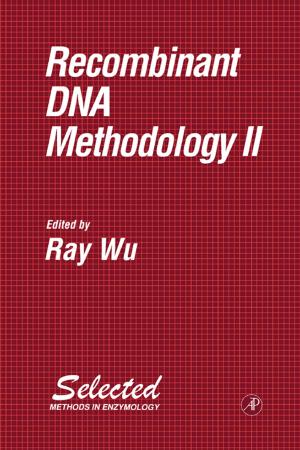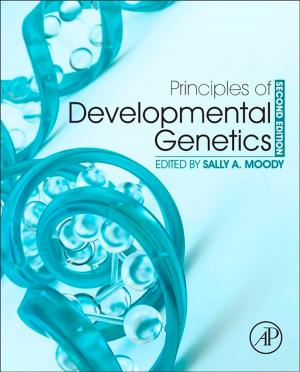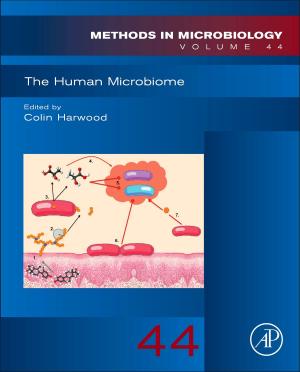Fundamentals of Stored-Product Entomology
Nonfiction, Science & Nature, Technology, Food Industry & Science| Author: | David Hagstrum | ISBN: | 9780128104286 |
| Publisher: | Elsevier Science | Publication: | June 8, 2016 |
| Imprint: | Woodhead Publishing and AACC International Press | Language: | English |
| Author: | David Hagstrum |
| ISBN: | 9780128104286 |
| Publisher: | Elsevier Science |
| Publication: | June 8, 2016 |
| Imprint: | Woodhead Publishing and AACC International Press |
| Language: | English |
This reference discusses the fundamentals of stored-product entomology that need to be considered in planning, implementation, and evaluation of a pest management program. It is based on the review of an extensive database of references and many years of research on stored-product insect problems by the expert authors. The information in this book helps answer consumers’ concern about pesticide residues in food by providing helpful IPM and alternative approaches for pest management. It provides the basic information needed to manage pests with and without the use of chemicals.
Managing pests requires a thorough understanding of insect biology, behavior, ecology, sampling, pros and cons of management options, and responses of insects to the various management options. This comprehensive book covers all of these topics, beginning with a discussion of the scope of stored-product entomology. It also provides insight into the diversity of foods and habitats utilized by stored-product insects, the types of economic losses attributable to them, and the ways in which an understanding of their biology can be used to study or manage these insects. Insect mobility, sources of insect infestation, sampling, life history, and population growth are discussed as well, as they play an important role in developing an effective sampling program. In addition, decision aids, the cost of management methods, and the resistance of insects to management methods are covered.
For insight into the thought process of choosing treatment options, eight pest management methods are thoroughly described, including a statement of the basic operating principle and background information. For help choosing various chemical and nonchemical methods for diverse situations, the advantages, disadvantages and implementation options for each method are given. Students, extension educators, consultants, food industry sanitarians and managers, legislators, regulators, and insect pest management professionals are sure to find information that will help them to improve pest management.
- Study questions at the end of each chapter
- Suggested supplemental reading, including books, conference proceeding papers, literature reviews, research papers, government publications, and popular articles
- General overview of the biology for a basic understanding of pest control issues
- Guides the reader through the thought process of designing a pest control program or research study
- Images of the most damaging of stored-product insect pest species for identification of families
- Quick methods for distinguishing closely related stored-product insect species
This reference discusses the fundamentals of stored-product entomology that need to be considered in planning, implementation, and evaluation of a pest management program. It is based on the review of an extensive database of references and many years of research on stored-product insect problems by the expert authors. The information in this book helps answer consumers’ concern about pesticide residues in food by providing helpful IPM and alternative approaches for pest management. It provides the basic information needed to manage pests with and without the use of chemicals.
Managing pests requires a thorough understanding of insect biology, behavior, ecology, sampling, pros and cons of management options, and responses of insects to the various management options. This comprehensive book covers all of these topics, beginning with a discussion of the scope of stored-product entomology. It also provides insight into the diversity of foods and habitats utilized by stored-product insects, the types of economic losses attributable to them, and the ways in which an understanding of their biology can be used to study or manage these insects. Insect mobility, sources of insect infestation, sampling, life history, and population growth are discussed as well, as they play an important role in developing an effective sampling program. In addition, decision aids, the cost of management methods, and the resistance of insects to management methods are covered.
For insight into the thought process of choosing treatment options, eight pest management methods are thoroughly described, including a statement of the basic operating principle and background information. For help choosing various chemical and nonchemical methods for diverse situations, the advantages, disadvantages and implementation options for each method are given. Students, extension educators, consultants, food industry sanitarians and managers, legislators, regulators, and insect pest management professionals are sure to find information that will help them to improve pest management.
- Study questions at the end of each chapter
- Suggested supplemental reading, including books, conference proceeding papers, literature reviews, research papers, government publications, and popular articles
- General overview of the biology for a basic understanding of pest control issues
- Guides the reader through the thought process of designing a pest control program or research study
- Images of the most damaging of stored-product insect pest species for identification of families
- Quick methods for distinguishing closely related stored-product insect species















